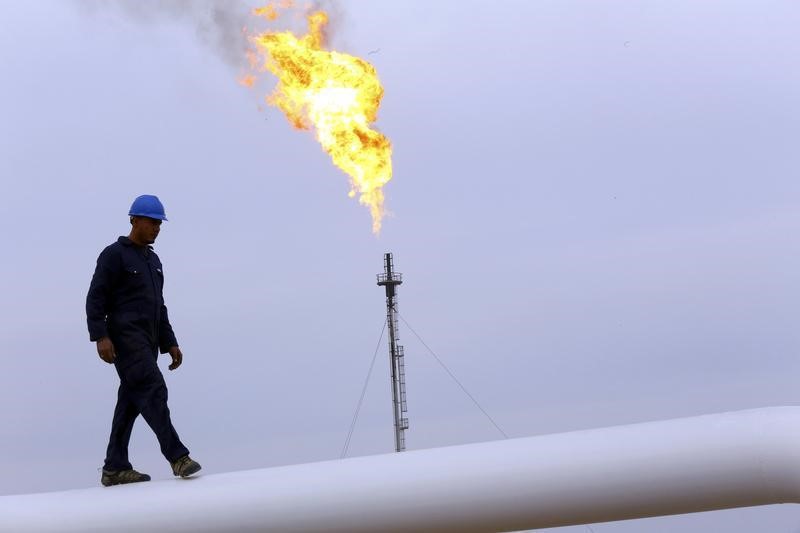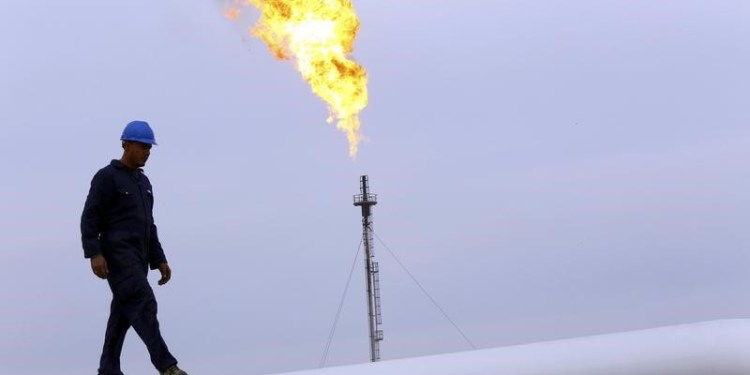
© Reuters.
(updates with settlement prices, add natural gas and weather forecasts)
By Barani Krishnan
Investing.com – Crude markets settled with their biggest loss in two weeks on Thursday after Russian President Vladimir Putin said the OPEC+ cartel which includes Moscow might put out more barrels than it has announced.
Oil prices were also down as China, India and other consumers fought back against high energy prices which they said could ruin their economies with runaway inflation.
Adding to the pressure on energy markets were expectations that much of the United States will have a warmer-than-average winter, following a downgrade to cold conditions by the National Oceanic and Atmospheric Administration. Natural gas prices fell almost 1% on the day after weekly storage levels rose slightly more than expected, another indication of warmer weather and less use for heating this fall.
In Putin’s case, he surprised markets by announcing that the OPEC+ was increasing oil output “a bit more than agreed”. That was in contrast to what most in the 23-nation oil producing alliance, led by Saudi Arabia, have been saying.
Officially, at its meeting in early October, OPEC+ said it will not add more than the 400,000 barrels per day increase it had committed to previously, despite a global supply squeeze that has sent prices to seven-year highs.
“Not all countries are able to significantly raise oil production,” Putin said, implying that Russia might be the exception. Besides him, Iraq’s Oil Minister has also said that Baghdad has the capacity to pump more.
The OPEC+ arrangement, in place since 2015, has worked largely due to the cooperation between Russia and Saudi Arabia — the world’s largest oil producers, aside from the United States, which has lost its number one ranking since the onset of the coronavirus pandemic in March 2020.
The Moscow-Riyadh pact has not been without its problems, however. A disagreement between the two on production led to a brief collapse of OPEC+’s working order before the pandemic, sparking a global supply glut that sent U.S. crude prices into negative territory the first time ever.
In Thursday’s session, U.S. crude’s West Texas Intermediate benchmark settled down 92 cents, or 1.1%, at $82.50 per barrel — its biggest one-day drop since Oct. 6. WTI fell to as low as $80.81 earlier. On Wednesday, it hit a high of $84.25, marking a seven-year peak.
London-traded Brent crude, the global benchmark for oil, settled down $1.21, or 1.4%, at $84.61. Brent hit a three-year high of $86.09 on Tuesday.
Aside from crude, falling coal markets in Asia also pressured prices across energy space on Thursday,
The benchmark January thermal coal contract on the Zhengzhou Commodity Exchange settled at below 1,588 yuan from Tuesday’s record high of 1,982 yuan after China’s National Development and Reform Commission said it will “study specific measures” to push down local prices for coal
India, the world’s third-biggest energy consumer after the United States and China, said on Thursday it wanted oil producers to consider supplying crude under longer-term contracts at fixed rates to help shield consumers from price volatility.
Source: Investing.com




























